In the 16th Century Spaniards were serious about religion. The king and queen ruled the country with the Catholic church at their right hand. Together they instituted the Spanish Inquisition – one of the cruelest, longest-running cases of “My Way or The Highway” in human history.
When the Conquistadores came to the New World, these strong religious ideas sailed with them. And to ensure that all those souls (both Spanish and Indigenous) were going in the right direction, churches were required – lots and lots of churches. The successful town of Morelia was a perfect example.
There are a surprising number of churches in the historic centro of Morelia, and they come in all sizes. It’s difficult to walk more than a few blocks without spotting the bell tower of yet another Spanish Colonial church. Almost all are still active places of worship, and are an integral part of the community. Worshippers come and go during the day to pray, meditate, or light a candle for a loved one. We’ve picked a few of our favorites, which vary from large and grandiose, to small and intimate.
The largest and most important church is the impressive Cathedral of the Divine Savior of Morelia, dominating the Plaza de Armas. It’s the seat of the Roman Catholic Archdiocese of Morelia, crown jewel of the historic area, and it dwarfs all other buildings in town.
Construction began in 1640, and took 100 years to complete, which explains its variety of architectural styles. But to the builders’ credit, the styles blend together perfectly. With it’s distinctive blue and white domes, this cathedral would not be out of place in any European capital, but the fact that it was built in an isolated colony on the other side of the world makes it even more extraordinary.
Right down the street from the Cathedral stands the Monastery of San Francisco. This church and convent abut a bustling plaza crowded with running children, loitering teenagers, families waiting for the bus, and Morelia’s ubiquitous balloon vendors.
The weathered Renaissance exterior attests that this is one of the oldest religious buildings in town. But it only takes a couple of steps inside to see that to the congregation it’s still a very sacred place.
The smallest and most intimate church we visited is the Chapel of San Juan. This simple church isn’t on any tourist list, and we stumbled onto it when making a fruit and veggie run to the neighborhood market. It was built in 1696, and when compared to the other churches in town it’s tiny. But there was something appealing about this small chapel. It looks and feels like a church from a small Mexican village; the kind where hard-working farmers and their families came on Sunday. There was a feeling of peace in this chapel that I didn’t feel in the other churches in town.
In a 2010 survey, 83% of Mexicans said they were Catholics. Even if only half of these folks are church-goers, that takes churches – lots of churches.
Adios,
James
Last Updated September 7, 2023

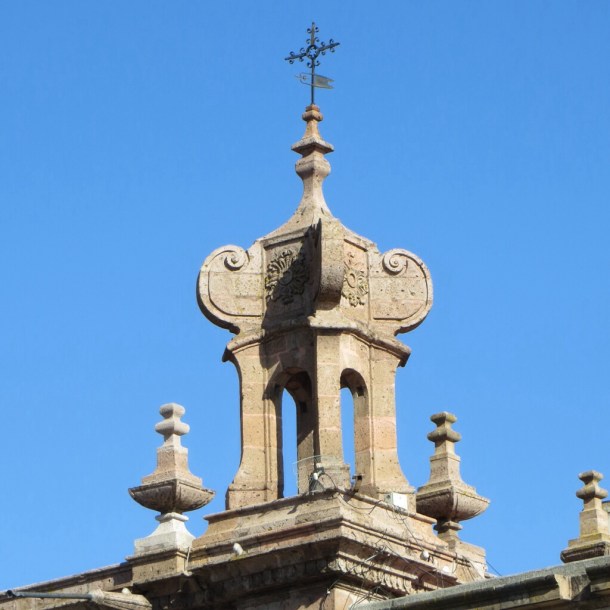
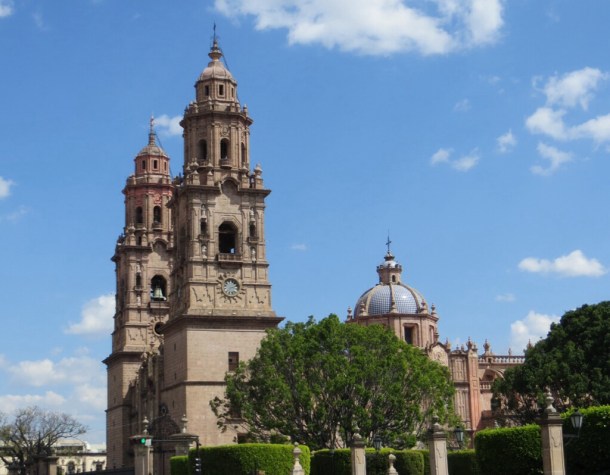
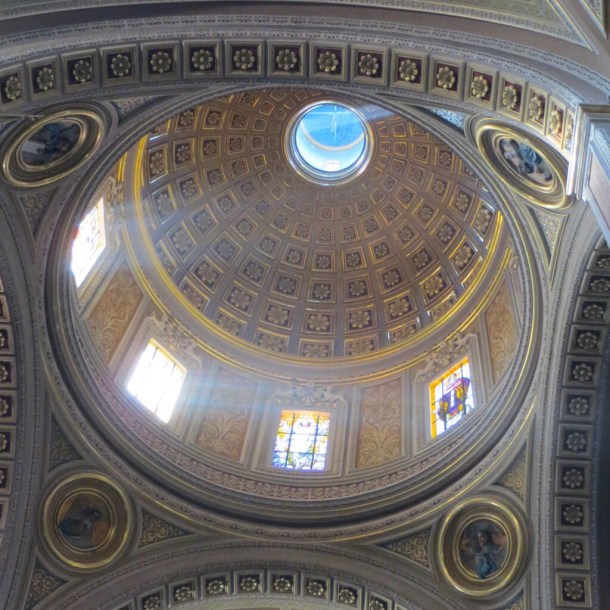

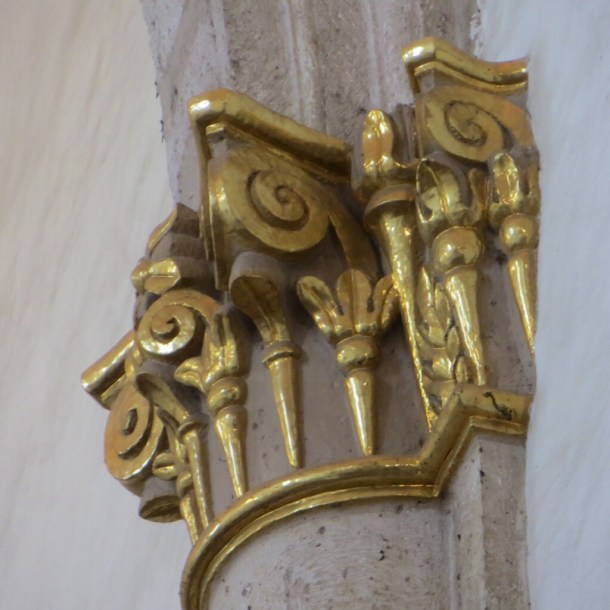

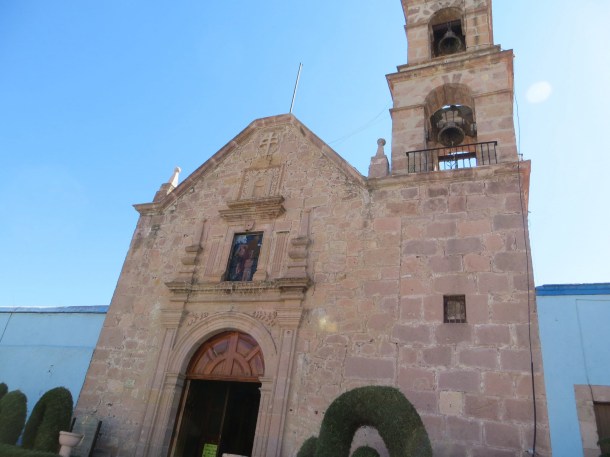

Those are cool churches. I like the plain, robust exterior and I LOVE the photo with the lift shafts in the interior.
I meant light shafts.
I like these shots as well Jeff. We were there just after Sunday mass, and the smoke from candles still hung in the air. In photography, luck counts too. ~ James
James I do wonder, even with percentages that you quote, how churches just blocks from each other can afford to keep running. Surely the maintenance on such old buildings must be immense. When traveling in other countries such as Italy and Portugal I have pondered the same question. Any ideas?
That’s a question that I’ve pondered myself Sue. Ancient architecture, massive size, and harsh climates all combining to create a maintenance (and financial) nightmare. And I can’t believe that most church-goers have such deep pockets for contributions. I do know that in our time here, we’ve seen a number of volunteers. Also, (and maybe some of our Catholic readers can answer this), I wonder if the local churches get some level of financial support from the Diocese (or even Rome). It’s a mystery to me as well. ~ James
I hope some readers can answer. My Mom belongs to a rural parish in Canada with an ever decreasing size of parishioners. One priest is shared between several towns and their churches. They actually have to give money to the diocese!
It’s strange how churches are such beautiful and spiritual constructs but is also just power play. Those are beautiful artworks tho! I liked San gimniano(?) in Italy too – there the lords were competing for the highest tower… My thanks for the pictures!
Tanny, in the 16-18th Centuries, the church really was just another political organization struggling to get and maintain its power. No doubt there were members of the church who were serious about their religion, but in the upper echelons, it was about power. Personally, I strongly agree with the idea of separation of church and state. ~ James
Completely!!
I have the same question. Are these people ALL going to church therefore supporting it (them) financially? Beautiful to look at. Awesome workmanship. Love ol.d churches because they inspire.
Tess, as I said to Sue, it’s a mystery to me as well. But the interesting thing that we’ve seen here, is how meticulously maintained the interior of these churches are. The exterior may have been bruised and battered by the years, but the interiors sparkle. ~ James
In that case, there is love and pride involved. Nice to hear. 🙂
I think if one made it their mission to photograph nothing but places of worship throughout Mexico, it could take months and you would see some of the most breathtaking architecture. We loved visiting and photographing churches during our time in Mexico.
I agree LuAnn. Also, after visiting quite a few churches, I find it interesting how each church has a different feel. I assume it’s a devotion to different saints and an emphasis on different parts of the bible. Terri and I always find a quiet pew in the corner to sit for a while and notice the details. We can’t begin to understand what they mean, but they’re certainly interesting to see and compare. ~ James
Totally agree with you James. We were enamored with the churches in each colonial city and little village we visited.
Yes, it’s easy for me to be overcome by the magnificence and beauty of these churches – they can feel holy . . . if I just try not to think too much about that whole Inquisition “thing.” 🙂
Yes Anita, that Inquisition was certainly a “Thing”. There’s nothing like that Christian charity and forgiveness. ~ James
I’ve been reading about the early Puritans in Massachusetts, James. While they weren’t into building magnificent structures like you showed today, they were definitely into control and the belief that church and state went together. –Curt
I took it easy on the Spanish and the Catholic Church Curt. Given the incredibly high percentage of Catholics in Mexico (and all of Latin America for that matter), this has to be one of the most successful cases of force-fed religion in human history. ~James
One can only wonder at the success.
Two things I have learned in our travels throughout many part of the Catholic world – First, the whole ‘Christian thing’ has had an amazing historic impact on societies around the world. (How’s that for an understatement?) Second, Catholics never have to go far to find a place to pray. Not only are there churches, cathedrals and basilicas scattered throughout most major cities in the world, but there are also monuments, chapels and roadside shrines along driving arterials in most countries we have visited.
I am pleased to note you have come up with your own church tour. I would call it the OCB Tour, aka tu Tura de Otra Catedral Bendecida. 🙂
Great photos as always. – Mike
Unless we travel, I don’t wander into Catholic churches Mike. But one of the things I’ve noticed here is how active the churches are throughout the day. Most of the churches are open every day, and there always seems to be a few people in prayer or meditation. I guess that going to church when no one’s watching shows real devotion, as opposed to just showing up on Sunday. ~ James
Must put Morelia on my to-see list.
Peggy, Morelia’s a bit off the path, but I think you’d enjoy some time in the highlands. Also, don’t miss San Miguel de Allende. ~ James
Love the blue and white chequered effect on the domes, and that is the cutest stained glass lamb I’ve seen in a long time 🙂
After seeing so many ornate and complicated stained-glass windows, it’s nice to see that simple works too. ~ James
Wow- the Cathedral of the Divine Savior, with sunlight streaming in, is certainly impressive! I’m not religious in any sense, but I absolutely love visiting churches, temples, and shrines, every chance I get. They’re fascinating studies of architecture, history, culture, and human psychology. Beautiful pictures, as always!
Thanks Miranda. I feel the same way about churches, temples, and shrines. Terri and I always sneak in and get an out-of-the-way seat, and just sit for a while. We can study the details (and that’s where the good stuff always is), and truth be told, in a normal traveler’s day having a sit-down is always a good idea. Somehow, I always leave with a sense of peace. ~James
If you are still in Morelia, don’t miss the Iglesia, Sanctuario de Guadalupe. Unassuming
exterior, mind blowing interior. Thanks so much for all your efforts. Happy trails
Thanks for the comment, and for dropping by the blog Robert. We visited the Sanctuario, and it was fabulous. In fact, it was so beautiful that we’re going to do a post just on that church. We’ve never seen anything like it. Thanks again. ~James
Loved the photo with sunrays trickling into the church…amazing capture
Thanks. I managed to be in the church just after a service, so the candle smoke was still hanging in the air. The photos turned out better than I expected. ~James
Timing do matters. Right people at the right place at the right time. Wow